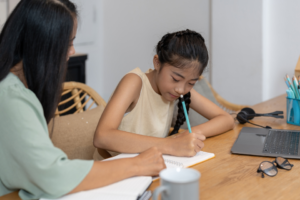
6 Smart Ways to Bring Spontaneity into Your Classroom
Sticking to the books is important with certain things. If there’s little margin for error and little time for exploration, spontaneity may feel ill advised. Fortunately, most learning opportunities don’t require such rigid structure. Venturing outside of the norms and letting lessons take on a life of their own might create a more immersive learning experience that makes the classroom a more exciting place.
1. Explore Instead of Correct
Telling a student that he or she got the answer wrong doesn’t necessarily do much. Ask them how they got the wrong answer. Have them explore their thought path. Explore their point of view. Have other students contribute. Explaining a conclusion, whether it’s the right or wrong conclusion, can easily become a spontaneous rabbit hole that reinforces a lesson through multiple avenues of exploration. Spend a little time going on tangents and allowing everyone to understand their peers’ way of thinking.
2. Spin the Learning Wheel
What will you do first? Let the wheel decide. Placing daily topics on a large wheel or writing them down on strips of paper to be pulled from a box or bag makes the day a little more fun. You’ll still move from point to point or objective to objective, but you’ll be doing things in a different order. This breaks up the monotony of the rhythm or formula you might use with your students. They’ll get a little excited to see what the next topic is going to be.
3. Go Outside Sometimes
Nice day? Move the class outside. A little change of scenery may have your students feeling inspired. Being stuck in the classroom day in and day out may feel boring and monotonous. Bringing class out into beautiful weather and fresh air will invigorate your students. This little change of pace might bring out new forms of creativity and innovation your students can use to explore mundane concepts in new ways.
4. Let Students Be the Teacher
If you have a few particularly gifted students, randomly present them with opportunities to lead. If you feel as though the lesson you’re teaching plays to the strengths of a student, call on that student. Have that student stand at the front of the class and relay what they know. Let them help their peers. A little unexpected empowerment can raise confidence in your students and encourage them to learn from each other. Things might take on a life of their own.
5. Go On Trips Without Leaving Home
It’s a little too complicated to spontaneously travel to a new part of the world. Instead, spontaneously bring that part of the world into the classroom. You can create a virtual field trip or hire someone to create a curated video experience of the place you’re learning about. If your students believe they’re going to sit through a perfectly normal lesson but are instead presented with a fully immersive learning experience, they’ll be pleasantly surprised.
6. Change Your Way of Thinking
Teachers get bored of relaying the same material over and over again, even if they don’t realize it. Sometimes, you need to know when to break your old habits and try something new. Turn a routine lesson into an adventure by incorporating new elements. Take a shot with a fun idea. If it doesn’t work, you can always fall back on a tried and true lesson plan. If it does work, you’re creating a better learning experience for the entire class – yourself included.
Teaching is all about innovating and experimenting. Try as many spontaneous things as possible. If they don’t work, no big deal. If they do work, that’s when the real magic happens.
Written by Anna Ashmore
Anna Ashmore is a woman of many talents. She is passionate about literature, sports, travel and education among many other things. She is also an amateur writer who hopes to make it big in the blog world.



